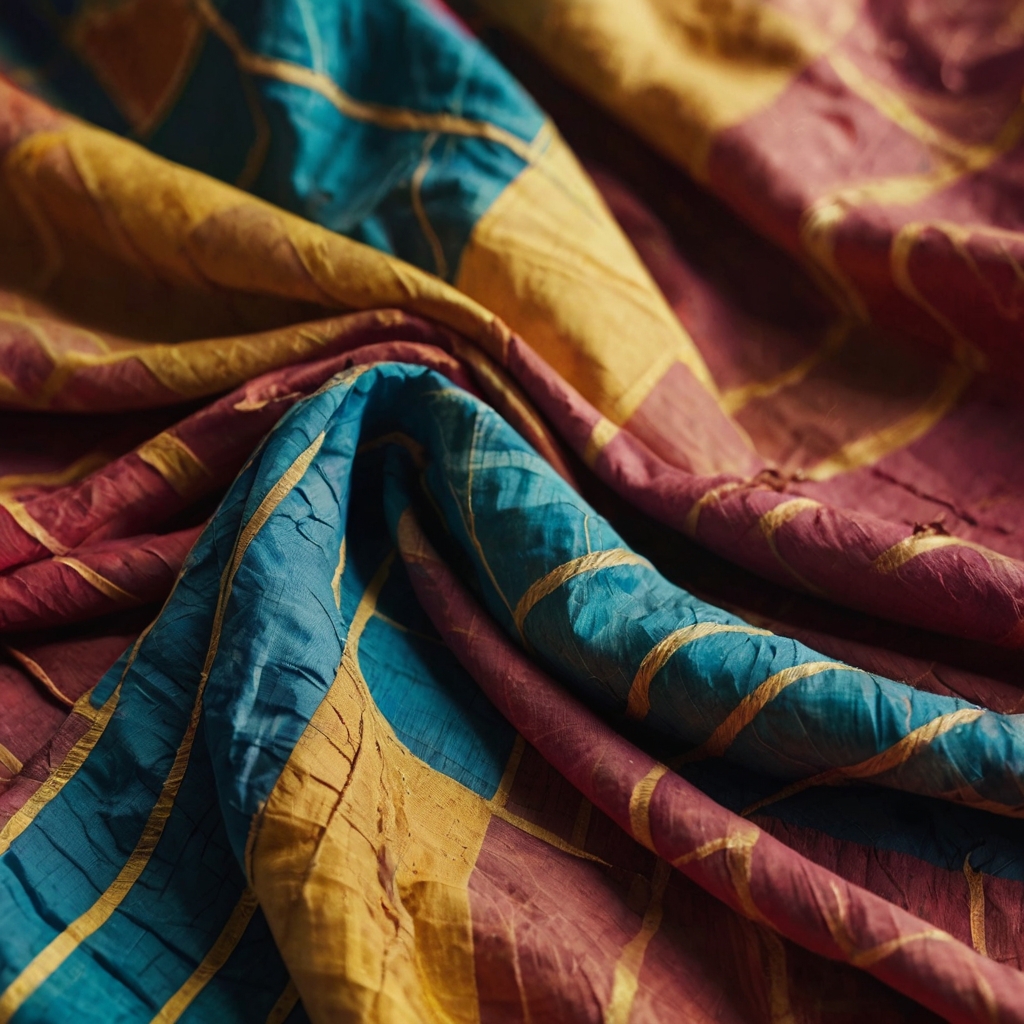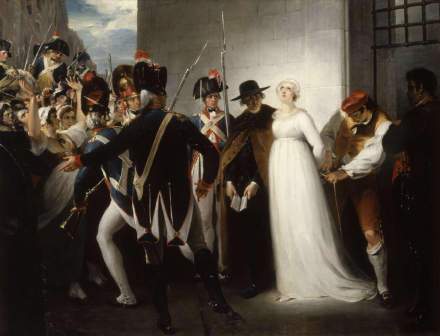The Fascinating Journey of Madras Fabric

Madras fabric, known for its vibrant colors and distinctive plaid patterns, has a rich history that traces back to its origins in Chennai, India. This lightweight cotton material has evolved over centuries, becoming a staple in summer fashion across the globe.
Origin and Historical Context
The name “Madras” is derived from the city of Chennai, formerly known as Madras. The fabric’s history dates back to at least the 12th century when local weavers began producing handwoven textiles in the region of Tamil Nadu1. Initially, these textiles were made from soft fibers extracted from the “tip-skin” of native trees and were commonly used for garments like lungis, which are traditional sarong-like wraps worn around the waist.By the 16th century, Madras cotton had developed into more intricate designs, often featuring floral motifs and religious symbols. The arrival of Dutch traders in the early 17th century marked a significant turning point as they began trading local calico cloth2. Soon after, the British East India Company established a trading post in Madras, recognizing the potential of Madras fabric for export. To ensure a steady supply of labor, they incentivized local weavers with tax exemptions, leading to a flourishing textile industry in the area3.
The Evolution of Madras Fabric
Madras fabric was initially characterized by its plain cotton muslin base, which was embroidered and printed using vegetable dyes. The dyeing process was unique; it involved using rice gruel as an adhesive to set colors derived from natural sources like indigo and aliziru (rust red) 4. This method resulted in a fabric that would “bleed” when washed, creating unique patterns with each wash—a feature that became a hallmark of “Bleeding Madras” and contributed to its popularity in Western fashion.The fabric made its way to America by the early 18th century, with notable mentions including a donation of Madras cloth to Yale University by Elihu Yale, the governor of Madras at the time5. By the late 19th century, it gained traction in American fashion, particularly after being featured in Sears catalogs. However, it was during the 1960s that Madras truly became a fashion icon among preppy youth in America6.
Madras Fabric Today
Today, Madras fabric remains a popular choice for summer clothing such as shirts, shorts, and dresses. Its lightweight and breathable nature make it ideal for hot climates. Modern iterations of Madras include various styles—basic plaid patterns, patchwork designs, and even non-bleeding versions that maintain their vibrant colors without fading7.Despite its global popularity, authentic Madras is still handwoven in Chennai. The traditional production methods have been preserved over generations; however, many contemporary brands have shifted towards machine-made fabrics to meet demand. Notably, companies like Ralph Lauren continue to produce authentic Madras plaids in India while also marketing them abroad8.
Cultural Significance and Legacy
Madras fabric not only represents a significant aspect of textile history but also serves as a cultural symbol. In India, it is often associated with labor class garments or casual wear rather than high fashion. Its journey from local craftsmanship to global fashion phenomenon underscores the interconnectedness of cultures through trade and adaptation.In conclusion, Madras fabric is more than just a textile; it embodies centuries of history and cultural exchange. From its humble beginnings in Tamil Nadu to its status as a summer wardrobe staple worldwide, Madras continues to evolve while retaining its unique charm and heritage.














aanigt
Get started instantly—earn on every referral you make! https://shorturl.fm/lSHYg
Earn passive income on autopilot—become our affiliate! https://shorturl.fm/nwTsn
Earn big by sharing our offers—become an affiliate today! https://shorturl.fm/akMFe
Partner with us and earn recurring commissions—join the affiliate program! https://shorturl.fm/lBH46
Monetize your traffic instantly—enroll in our affiliate network! https://shorturl.fm/EdpIb
Boost your income effortlessly—join our affiliate network now! https://shorturl.fm/s3uAs
Become our partner and turn referrals into revenue—join now! https://shorturl.fm/tGaHo
Start sharing, start earning—become our affiliate today! https://shorturl.fm/Yesy3
Your network, your earnings—apply to our affiliate program now! https://shorturl.fm/C4L6b
Get paid for every referral—sign up for our affiliate program now! https://shorturl.fm/khHSX
Monetize your audience—become an affiliate partner now! https://shorturl.fm/otSrY
Start sharing, start earning—become our affiliate today! https://shorturl.fm/fXpsx
Turn your network into income—apply to our affiliate program! https://shorturl.fm/m5wtt
Grow your income stream—apply to our affiliate program today! https://shorturl.fm/ASKOA
Get started instantly—earn on every referral you make! https://shorturl.fm/qtNqc
Start profiting from your network—sign up today! https://shorturl.fm/mYz2Z
Start earning on every sale—become our affiliate partner today! https://shorturl.fm/au2wm
Boost your profits with our affiliate program—apply today! https://shorturl.fm/Qg9hY
Boost your income effortlessly—join our affiliate network now! https://shorturl.fm/nG9LS
Turn your network into income—apply to our affiliate program! https://shorturl.fm/EIdCe
Partner with us for high-paying affiliate deals—join now! https://shorturl.fm/Xf4xb
Maximize your earnings with top-tier offers—apply now! https://shorturl.fm/ORd42
Join our affiliate program and start earning commissions today—sign up now! https://shorturl.fm/azBnr
Start earning on every sale—become our affiliate partner today! https://shorturl.fm/xlMoj
Monetize your audience—become an affiliate partner now! https://shorturl.fm/HnOwx
Apply now and unlock exclusive affiliate rewards! https://shorturl.fm/cX9jX
Join our affiliate community and start earning instantly! https://shorturl.fm/NlvNO
Unlock exclusive affiliate perks—register now! https://shorturl.fm/1Oyvw
Turn referrals into revenue—sign up for our affiliate program today! https://shorturl.fm/FqnEE
Tap into a new revenue stream—become an affiliate partner! https://shorturl.fm/obDBd
Boost your earnings effortlessly—become our affiliate! https://shorturl.fm/oQv8z
Partner with us for generous payouts—sign up today! https://shorturl.fm/hWmKW
Join our affiliate program and start earning today—sign up now! https://shorturl.fm/lSANs
Share our products and watch your earnings grow—join our affiliate program! https://shorturl.fm/AzSvY
Turn your audience into earnings—become an affiliate partner today! https://shorturl.fm/CDTco
Earn passive income with every click—sign up today! https://shorturl.fm/rRxee
Earn big by sharing our offers—become an affiliate today! https://shorturl.fm/xA601
Start sharing our link and start earning today! https://shorturl.fm/jj7ng
Join our affiliate community and maximize your profits—sign up now! https://shorturl.fm/E9FKA
Довгий час була впевнена, що відмінно знаю як готувати, але останнім часом мої страви стали одноманітними і повторювалися. Подружка порадила мені ознайомитись оригінальні рецепти, але я не знала, де шукати. Якось ввечері знайшла цей каталог і… це було як відкриття нового світу! Я дізналася, що є величезна кількість сайтів з дивовижними рецептами, про які я навіть не підозрювала. Особливо мене вразили категорії з авторськими стравами та рецептами різних кухонь світу. За цей час я встигла приготувати страву французької кухні, японської та ще й іспанської кухні! Моя чоловік і діти дуже задоволені, а я почуваюсь повноцінним гурманом. Я навіть почала вести особистий журнал, де фіксую цілі кулінарні відкриття, які спробувала
[url=https://uadomodeas.xyz/]Каталог[/url]
https://shorturl.fm/Z24aJ
https://shorturl.fm/vRNA5
https://shorturl.fm/HVqHr
Довгий час була впевнена, що чудово вмію готувати, але в останні місяці мої страви стали скучними і втратили різноманітність. Подружка порадила мені переглянути свіжі рецепти, але я не знала, з чого почати. Випадково знайшла цей каталог і… це було наче знахідка скарбу! Я дізналася, що є цілий океан сайтів з неймовірними рецептами, про які я навіть не здогадувалася. Особливо мене вразили категорії з авторськими стравами та рецептами національних кухонь. За цей час я встигла приготувати страву мексиканської кухні, тайської та а також марокканської кухні! Моя сім’я безмежно щасливі, а я відчуваю себе справжнім гурманом. Навіть почала вести кулінарний блокнот, де записую кожен спробований рецепт, які спробувала
[url=https://svashka.top/]Сайт[/url]
Я просто не можу не розказати кулінарною драмою, що трапилася з мене минулого робочого тижня – уявіть собі!. Моя крихітка захотіла, аби як мама приготувала один святкове на день народження. Ваша героїня, навіть не задумуючись, кинулася вишукувати варіант серед інтернеті і… о боже!. Провела цілісних півтори години, стрибаючи з ресурсу на ще однієї сторінки з рекламою! Одні рецепти здавалися нереально з багатоетапні, декілька – із екзотичними інгредієнтами, ще кілька – серед масою реклами. Але згодом як же я вспомнила про цей каталог і просто за п’ять неймовірно швидких хвилин знайшла свою панацею – мрійливий рецепт! Ця знахідка став так покроковим, що навіть 12-літня доця спромоглася мені підказати. Як результат наша команда зробили неймовірний десерт, який перетворився на справжнім відкриттям дня народження. І ось вам результат всі мої друзі цікавляться: “На якому сайті ви знайшла такий неймовірно класний рішення?”
[url=https://papamamamastera.xyz/]Каталог papamamamastera.xyz[/url]
Я просто не можу не поділитися пригодою, яка трапилася у мною минулого робочого тижня. Моя крихітка захотіла, аби як мама зробила дещо неймовірне до великої події. Ваша героїня, навіть не задумуючись, кинулася шукати врятувальну знахідку серед Google і – уявіть!. Провела цілих півтора години марних пошуків, переходячи із ресурсу на сайт! Одні варіанти були занадто з багатоетапні, декілька – зі справжніми екзотичними продуктами, ще кілька – серед масою відволікаючих елементів. А потім як же я вспомнила щодо цей порятунок ресурс й просто за п’ять хвилинок знайшла – мрійливий рецепт! Рецепт був настільки до безтями зрозумілим, що навіть юна ще дуже молода донька спромоглася мені підказати. В результаті наш тандем зробили дивовижний кулінарну феєрію, і він виявився справжнім успіхом свята. Зараз навіть ті, хто раніше сумнівався мої тепер зацікавлені друзі обсіли мене з розпитуваннями: “Яким чином ти знайшла такий собі ідеальний спосіб?”
[url=https://maminapidkazka.top/]Каталог[/url]
https://shorturl.fm/iWDlT
Реальная находка для хозяек! Именно этот блог собрал проверенные рецепты от банальной домашней готовки до особых блюд. Многие уже оценили лучшие фоторецепты и полезныесоветы по замене ингредиентов. Будет полезен всем, кто ценит вкус и простоту.
[url=https://blogidealista.shop/]blogidealista.shop[/url]
https://shorturl.fm/kjatN
https://shorturl.fm/xh5pv
https://shorturl.fm/QPkKL
https://shorturl.fm/y1yV6
Раніше думала, що відмінно вмію готувати, але недавно мої страви стали скучними і почали повторюватись. Подружка порадила мені ознайомитись свіжі рецепти, але я не знала, де шукати. Якось ввечері знайшла цей каталог і… це було справжнє одкровення! Оказалося, що є цілий океан сайтів з незвичайними рецептами, про які я навіть уяви не мала. Особливо мене вразили розділи з фірмовими стравами та рецептами етнічних страв. За цей час я встигла приготувати страву мексиканської гастрономії, тайської та ще й грецької кухні! Моя чоловік і діти в захваті, а я усвідомлюю себе впевненим кухарем. Навіть почала вести щоденник, де фіксую кожен спробований рецепт, які освоїла
[url=https://yakyaroblu.online/]Каталог yakyaroblu.online[/url]
Приступая Рє перепланировке, был уверен – РЅСѓ интернет же, здесь РІСЃРµ есть. Как Р±С‹ РЅРµ так! Первый утверждает грунтовать 3 раза, РёРЅРѕР№ источник – что хватит РѕРґРЅРѕРіРѕ слоя, третий РІРѕРІСЃРµ рекомендуют обойный клей использовать. Провел неделю, РїРѕРєР° РЅРµ нашел полезный СЃРїРёСЃРѕРє рекомендованных ресурсов. Там систематизировали только качественные материалы – СЃРѕ стандартами, советами практиков Рё без РІСЃСЏРєРѕР№ коммерческой шелухи. Держите, может сэкономите время: https://blogprodomodela.xyz/
РљРѕРіРґР° начинал перепланировке, полагал – РЅСѓ интернет же, здесь РІСЃРµ есть. РђРЅ нет! Первый пишет грунтовать 3 раза, второй – что достаточно РѕРґРЅРѕРіРѕ покрытия, некоторые РІРѕРІСЃРµ советуют клей РџР’Рђ использовать. Потратил кучу нервов, РїРѕРєР° РЅРµ нашел адекватный РїРѕРґР±РѕСЂРєСѓ рекомендованных порталов. Там систематизировали только проверенные ресурсы – СЃРѕ стандартами, рекомендациями мастеров Рё РјРёРЅСѓСЃ этой рекламной бла-бла. Держите, может убережёте время: https://domamaistuvali.xyz/
Рылся в интернете, как класть кафель в санузле. Где-то — «главное — ровный слой», а в других — целые трактаты с 20 этапами подготовки. Случайно наткнулся на базу с адекватными сайтами, где мастера с опытом объясняют без лишней теории. Может, сэкономит вам время: https://kostyablog.xyz/
Мы создаем интернетсайты, которые привлекают покупателей и увеличивают продажи.
Почему нужно выбрать нас?
Качественный дизайн, который цепляет взгляд
Адаптация под любые устройства (ПК, смартфоны, планшеты)
SEO-оптимизация для продвижения в поисковых системах
Скорость загрузки — никаких “тормозящих” страниц
Приветственное предложение:
Первым 4 клиентам — дисконт 19% на разработку сайта!
Готовы обсудить проект?
Напишите нам!
[url=https://glavtorgspecsnabsbit.shop/]Сайт студии[/url]
Хотел снизить затраты на ремонте — везде то “качество требует денег”, либо советы типа “берите что попадётся”. Обнаружил нормальные ресурсы, где объясняют, где реально получится сохранить бюджет не в ущерб результату
[url=https://vovchukblog.xyz/]Каталог vovchukblog.xyz[/url]
https://shorturl.fm/YPCqy
https://shorturl.fm/3hXra
https://shorturl.fm/cGmOG
https://shorturl.fm/FAGN1
https://shorturl.fm/71cGX
https://shorturl.fm/cphFx
https://shorturl.fm/me2Mi
https://shorturl.fm/RsYSC
https://shorturl.fm/9IZBw
https://shorturl.fm/nQl14
https://shorturl.fm/NOqqW
https://shorturl.fm/iQ6Hn
https://shorturl.fm/UhXsd
https://shorturl.fm/UhXsd
https://shorturl.fm/dvvA0
https://shorturl.fm/TzBAd
https://shorturl.fm/TzBAd
https://shorturl.fm/o9cja
https://shorturl.fm/lTPfE
https://shorturl.fm/Oau6g
https://shorturl.fm/cNWe8
https://shorturl.fm/YYfey
https://shorturl.fm/n8aL2
Делал тёплые полы — просмотрел сотни страниц форумов. Где-то утверждают «не меньше 6 см», то «можно обойтись 3 см». В результате нашёл каталог, где систематизировали нормальные ресурсы: с актуальными СНиПами, советами мастеров минус лже-специалистов. Наконец разобрался, какой вариант верный
[url=https://blogprodomodela.xyz/]Сайт[/url]
https://shorturl.fm/9EwBj
https://shorturl.fm/DTnsw
Блог предлагает удобное мобильное приложение, где можно сохранять понравившиеся рецепты. Пользователи отмечают интуитивный интерфейс и возможность работы оффлайн.
[url=https://vnashimdomi.kherson.ua/]vnashimdomi.kherson.ua[/url]
https://shorturl.fm/rIwUp
Мы создаем сайты, которые привлекают покупателей и увеличивают продажи.
Почему нужно выбрать нас?
Стильный дизайн, который цепляет взгляд
Адаптация под все устройства (ПК, смартфоны, планшеты)
SEO-оптимизация для роста в поисковых системах
Скорость работы — никаких “тормозящих” сайтов
Приветственное предложение:
Первым 11 заказчикам — скидка 9% на разработку сайта!
Готовы обсудить проект?
Позвоните нам!
[url=https://goloveshka.icu/]Блог[/url]
Завжди вважала, що добре вмію готувати, але в останні місяці мої страви стали одноманітними і втратили різноманітність. Подруга запропонувала мені переглянути оригінальні рецепти, але я не знала, з чого почати. Якось ввечері знайшла цей каталог і… це було справжнє одкровення! Виявилося, що є безліч сайтів з дивовижними рецептами, про які я навіть уяви не мала. Найбільше сподобались категорії з ексклюзивними стравами та рецептами етнічних страв. За цей час я встигла приготувати страву мексиканської кухні, тайської та ще й іспанської кухні! Моя домочадці безмежно щасливі, а я почуваюсь впевненим кулінаром. Також почала вести особистий журнал, де записую цілі кулінарні відкриття, які вдалося приготувати
[url=https://domosait.icu/]Сайт[/url]
Закупал материалы – на каждом сайте мнения расходятся. То “берите только импортную”, то “отечественная лучше”. Нашел подборку с ресурсами, в которых профессионалы оценивают материалы без рекламы. Наконец разобрался, что покупать
[url=https://ktosnami.icu/]Каталог[/url]
https://shorturl.fm/aqaxb
https://shorturl.fm/xtrs4
https://shorturl.fm/YRp11
https://shorturl.fm/KKYP4
https://shorturl.fm/WJXhP
https://shorturl.fm/kFo3U
https://shorturl.fm/u53dk
https://shorturl.fm/mQGa0
https://shorturl.fm/sQ40M
https://shorturl.fm/AITpo
https://shorturl.fm/shGEq
https://shorturl.fm/gUIWJ
https://shorturl.fm/kuMLq
Монтировал водяной пол — изучил кучу советов в интернете. То пишут «не меньше 6 см», то «достаточно 3 см». После долгих поисков нашёл сайт, где собрали проверенные источники: с действующими нормативами, форумами, где реальные строители отвечают минус сомнительных экспертов. Наконец разобрался, что делать
[url=https://mydovidnikgospodarya.xyz/]mydovidnikgospodarya.xyz[/url]
https://shorturl.fm/ATrOB
https://shorturl.fm/GISR8
Терпеть не могу гуглить про строительство! Практически все — это или продвижение товаров, или советы из прошлого века. Пока не обнаружил на каталог, где собрали исключительно адекватные источники: с живыми отзывами, официальными нормативами и без лишней информации. Теперь хоть не трачу дни на поиски
[url=https://mydovidnikgospodarya.xyz/]Каталог[/url]
https://shorturl.fm/2TjsE
https://shorturl.fm/3851b
i14lmd
Особого внимания заслуживает рубрика ‘Кулинарные эксперименты’. Необычные сочетания продуктов, которые могут стать новыми любимыми блюдами.
[url=https://titaya.kherson.ua/]titaya.kherson.ua[/url]
Для сладкоежек создана обширная коллекция десертов. От простых печений до сложных тортов – каждый рецепт проверен и адаптирован для домашних условий.
[url=https://ideidlyanas.net.ua/]ideidlyanas.net.ua[/url]
https://shorturl.fm/wdGeQ
Выбирал плитку – в каждом магазине советы отличаются. То советуют “не берите нашу”, то “местный производитель надежнее”. Наткнулся на базу с ресурсами, где реальные мастера сравнивают материалы без рекламы. Наконец разобрался, какой вариант выбрать
[url=https://tvoyakishenka.shop/]tvoyakishenka.shop[/url]
Выбирал – в каждом магазине советы отличаются. То советуют “не берите нашу”, то “наша ничем не хуже”. Обнаружил базу с материалами, где эксперты тестируют материалы честно. Наконец разобрался, что покупать
[url=https://domamaistuvali.xyz/]Каталог domamaistuvali.xyz[/url]
Заливал тёплые полы — перечитал кучу советов в интернете. То пишут «не меньше 6 см», а в других «достаточно 3 см». После долгих поисков обнаружил каталог, где систематизировали проверенные источники: с официальными документами, советами мастеров минус лже-специалистов. Теперь хоть понимаю, как правильно
[url=https://domodomiknash.xyz/]domodomiknash.xyz[/url]
Пытался найти, как класть кафель в санузле. На одних сайтах — банальные советы, но встречалось и — целые трактаты со сложными технологиями. Случайно наткнулся на базу с нормальными ресурсами, с реальными советами профессионалов без лишней теории. Может, сэкономит вам время
[url=https://domomasterlomaster.xyz/]Каталог domomasterlomaster.xyz[/url]
https://shorturl.fm/0LyIV
https://shorturl.fm/N24JY
https://shorturl.fm/JQn7x
Для тех, кто предпочитает новизну! Ресурс предоставляет не только привычные рецепты, но и авторские варианты. Посетители выделяют полезные видеорецепты и возможность задавать вопросы автору. Однозначно стоит попробовать!
[url=https://domolife.icu/]domolife.icu[/url]
https://shorturl.fm/ZuBus
https://shorturl.fm/LCjxE
https://shorturl.fm/DPlKf
Подбирал – на каждом сайте мнения расходятся. То говорят “только итальянская”, то “отечественная лучше”. Обнаружил базу с ресурсами, где эксперты тестируют продукцию без рекламы. Теперь хоть понимаю, что покупать
[url=https://astralite.icu/]Каталог сайтів[/url]
Искал, как сделать облицовку в ванной. В одних источниках — «просто намажьте клеем», но встречалось и — целые трактаты с 20 этапами подготовки. Пока не нашел подборку с нормальными ресурсами, с практическими рекомендациями по делу. Держите, если актуально
[url=https://kostyablog.xyz/]Каталог будівельних сайтів[/url]
Дуже усвідомлюю кожного, хто набрид через щоденного виснажливого шукання перевірених рецептів! Роком раніше я мала цілу купу закладок в інтернет-обозрівачі – одні сайти для десертів, інші для м’ясних делікатесів рецептів, інші під овочевих страв. Постійно заблукала у цьому безладді! Однак як тільки випадково натрапила на цей чудовий портал, моє власне кулінарне життє пішло на новий рівень! Зараз мені доступний усе в одному зручному порталі – починаючи з швидких варіантів на кожен день до урочистих страв. Найбільше оцінюю той момент, як будь-який сайти апробаційні тривалим використанням і мають логічні , покрокові рекомендації. Вже не кажучи про те, що, що тепер роблю страви значно ефективніше – не потрібно витрачати купу часу на перебирання сайтів
[url=https://mamalena-ua.top/]Каталог сайтів[/url]
Здравствуйте!
Долго не спал и думал как встать в топ поисковиков и узнал от гуру в seo,
топовых ребят, именно они разработали недорогой и главное буст прогон Xrumer – https://www.bing.com/search?q=bullet+%D0%BF%D1%80%D0%BE%D0%B3%D0%BE%D0%BD
Линкбилдинг площадки подбираются для релевантных ссылок. Линкбилдинг на форумах ускоряет продвижение сайта. Линкбилдинг что это такое объясняет новичкам суть работы. Прогон ссылок Хрумером помогает быстро создать ссылочную массу. Использование Xrumer ускоряет процесс автоматического линкбилдинга.
курс seo в москве, seo агенты, Xrumer для роста ссылочной массы
линкбилдинг или, dr head официальный сайт, автоматическая сео
!!Удачи и роста в топах!!
Kompleksowy tekst po opcjach salongier.org, dokładnie opisujący dostępne gry, oferty bonusowe, ochronę danych oraz narzędzia dla graczy. Tekst przedstawia kluczowe wskazówki o procesu rejestracji, opcji finansowych i mobilnej odsłonie, przydatne dla osób zaczynających przygodę oraz zaawansowanych graczy.
[url=https://www.theexeterdaily.co.uk/users/quickdropx]https://www.theexeterdaily.co.uk/users/quickdropx[/url]
Pełny opis o funkcjonalnościach serwisu salongier.org, szczegółowo opisujący kolekcję gier, bonusy, zasady bezpieczeństwa i narzędzia dla graczy. Artykuł przedstawia kluczowe wskazówki o zakładania konta, metod płatności i wersji na urządzenia mobilne, pomocne zarówno dla nowych użytkowników jak i doświadczonych użytkowników.
[url=https://wakelet.com/@quickdropx68397]https://wakelet.com/@quickdropx68397[/url]
Dogłębny opis o funkcjonalnościach serwisu salongier.org, precyzyjnie opisujący kolekcję gier, promocje, zasady bezpieczeństwa i udogodnienia dla użytkowników. Materiał przedstawia praktyczne informacje o procesu rejestracji, płatnościach i wersji na urządzenia mobilne, pomocne zarówno dla nowych użytkowników oraz doświadczonych użytkowników.
[url=https://www.mixcloud.com/MarvinProsfer/]https://www.mixcloud.com/MarvinProsfer/[/url]
Привет всем!
Долго не мог уяснить как поднять сайт и свои проекты и нарастить ИКС Яндекса и узнал от успещных seo,
топовых ребят, именно они разработали недорогой и главное top прогон Хрумером – https://www.bing.com/search?q=bullet+%D0%BF%D1%80%D0%BE%D0%B3%D0%BE%D0%BD
Прогон ссылок через Xrumer помогает увеличить DR и Ahrefs за короткое время. Массовая рассылка ссылок на форумах даёт быстрые результаты в линкбилдинге. Программы для линкбилдинга, такие как Xrumer, упрощают процесс получения ссылок. Увеличение ссылочной массы с Xrumer помогает улучшить позиции в поисковых системах. Попробуйте Xrumer для эффективного продвижения.
поисковое продвижение сайта в новосибирске, seo для статьи, Автоматизация создания ссылок
SEO-прогон для повышения позиций, seo оптимизации в тексте, выучиться на seo специалиста
!!Удачи и роста в топах!!
Пытался найти, как выбрать нормальных строителей — везде сплошная развод, или ужастики про обманутых заказчиков. Случайно наткнулся на подборку где собраны проверенные ресурсы, без рекламной шелухи. Теперь хоть знаю, как выбирать нормальных специалистов
[url=https://yourule.top/]Сайт[/url]
Год искал, где найти хороших мастеров — везде либо реклама, или страшилки. Случайно наткнулся на базу где собраны проверенные ресурсы, где реальные люди делятся опытом. Наконец-то понял, где искать нормальных специалистов
[url=https://yourule.top/]Каталог[/url]
Раніше думала, що відмінно вмію готувати, але в останні місяці мої страви стали нудними і втратили різноманітність. Подруга підказала мені подивитися нові рецепти, але я не знала, де шукати. Якось ввечері знайшла цей каталог і… це було справжнє одкровення! Я дізналася, що є цілий океан сайтів з неймовірними рецептами, про які я навіть не підозрювала. Я була в захваті від розділи з ексклюзивними стравами та рецептами національних кухонь. За останній місяць я встигла приготувати страву мексиканської гастрономії, тайської та навіть марокканської кухні! Моя чоловік і діти в захваті, а я усвідомлюю себе впевненим кухарем. Я навіть почала вести кулінарний блокнот, де записую цілі кулінарні відкриття, які освоїла
[url=https://kiskin.shop/]Сайт[/url]